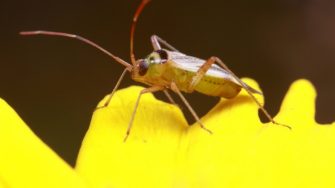
Synopsis
The Miridae is one of the most diverse families of insects, with over 12,000 described species. The male genitalia is greatly exaggerated, representing some of the most bizarre structures in the Animal Kingdom. These structures are not only highly diverse; they are also central to the classification of the family. Although the morphology of the male genitalia has been extensively documented, how they have evolved is a matter of great conjecture.
In this project, the student will analyse the evolution of male genitalia using molecular methods and observation of fine structures using micro-CT imaging. This will likely result in a new classification of the family, determination of character state transformations, and if character convergence occurs across mirid subfamilies. The combination of molecular and CT methods will likely result in a high impact publication.
Aims
- Documentation and determination of male genitalic homologies in the Miridae.
- Imaging and analysis of fine details of male genitalia using scanning and CT microscopy.
- Phylogenetic analysis of exemplar taxa of the Miridae and optimisation of male genitalic characters.
- Phylogenetic analyses using modern molecular methods.
Student benefits
- Training in insect systematics and evolution.
- Training in molecular and micro-CT methods.
- Participation in a team-based research lab at UNSW.
- Likely publication in high impact journal.
- Experience in research-active laboratory and exposure to international collaborators.
Get involved
To learn more about this project, contact Professor Gerry Cassis
T: +61 2 9385 3438
